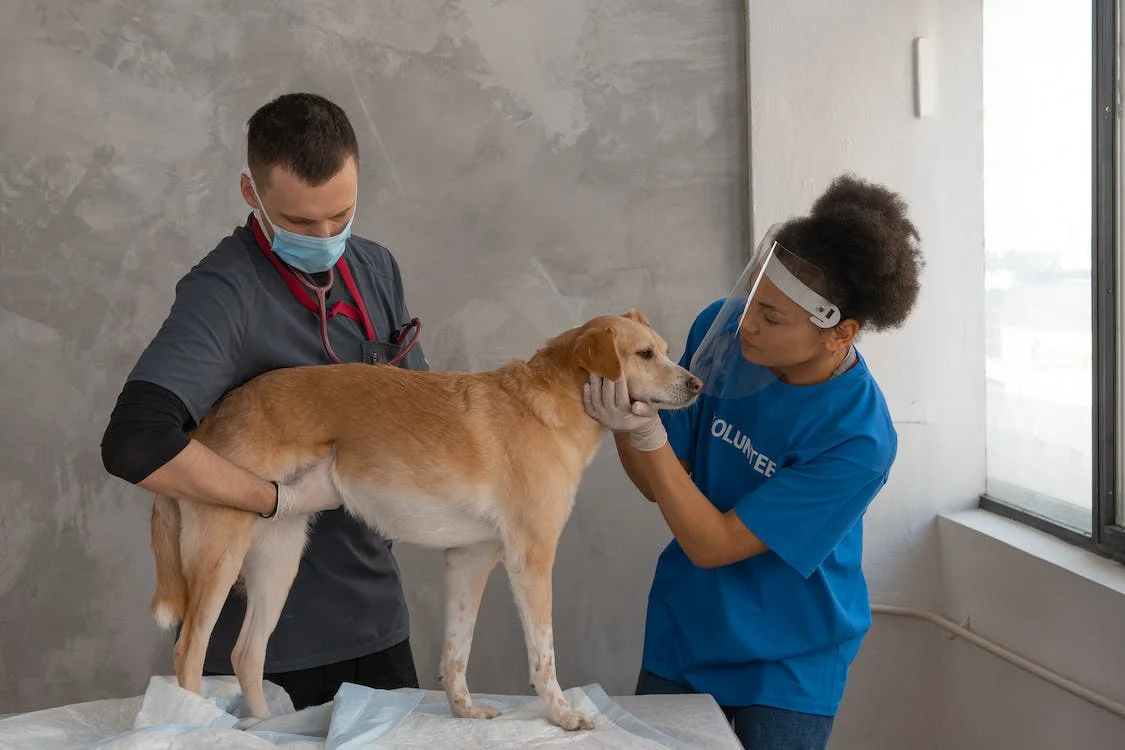
Everyone knows and appreciates how amazing, patient, and loving dogs can be as companions. Unfortunately, probably few of you know that dogs can become irreplaceable aid for healing for many persons dealing with a challenging health condition. There are many people who are struggling with Multiple Sclerosis, or MS for short, who may want to know about service dogs that help people with similar conditions.
What Are Service Dogs Exactly?
Service dogs are working service animals that help people with disabilities. Service dogs are individually trained to perform tasks that directly aid a person and help them establish more control and confidence throughout their day. I should add that some states in the US include miniature horses in the category of service animals. However, almost all countries in Europe, and North America generally refer to service animals as service dogs, guide dogs, assistance dogs, mobility dogs, and hearing dogs. Emotional Support Animals are not classified as service dogs as they are not trained to perform special tasks and they do not have guaranteed access rights like the service dogs by law.
Legal Framework
As you may know, MS affects a significant portion of a person’s life like their vision, balance, and motor skills. You can have a service dog if your disability substantially limits one or more major life activities. You can acquire a service dog from a non-profit dog training organization or you can train one yourself, however, depending on your location self-training may not be an option. The UK, the US, and the EU allow for self-trained animals, and only a few provinces in Canada allow for self-trained service dogs who need to pass a public safety test (Ontario and British Columbia for example). It is best to consult a doctor and a local human rights counsel before you consider acquiring a service animal.
If you are dealing with MS and you don’t know how a service dog can help you, please continue reading.
How Can a Service Dog Help a Person With MS?
As mentioned above, mobility and motor issues are a big part of the challenges associated with MS. You can train a dog to help you keep your balance, retrieve items from the floor, guide you through public spaces and pull a wheelchair. Service dogs can introduce a routine to your life, offer emotional support, help you with your balance, help you navigate public spaces and demonstrate affection to counter the psychological aspect of living with MS. Dogs can respond to your emotional cues by reading your breathing, heartbeat, and facial expressions very well as this study that is a part of Biology Letters at The Royal Society Journal shows. Service dogs can be trained to look for help in a case of a medical emergency even. A shortlist of specific tasks can be found below:
• Picking up and bringing items to you off the floor;
• Open or close doors and drawers (granted you may have to adjust your home for this);
• Pull a wheelchair or laundry baskets for you;
• Carry a small bag;
• Assist in removing clothing;
• Turn the lights on and off;
• Retrieve medication for you;
• Guide people with hearing and vision problems;
• Support your body in case of mobility issues.
As mentioned above, a service dog can help you build your confidence and overcome some of the limitations that come with MS. Your dog can create a routine, keep you motivated and enable a healthier lifestyle. You will need to go out on walks with your dog, meet new people, buy toys and care for your dog like any other person and contribute to a fulfilling life. The physical connection to your dog through nose nudges, paw pushes, hugs, laying in your lap, licks/kisses on your face, and playtime can help you stay positive.
Are You Able to Care for a Service Dog and Benefit From Having One?
The first thing you need to consider is if you can control a dog independently. There should be plenty of space for your dog and you at home. You should not be allergic to dogs/animal fur. You have to be sure that you or an assigned caretaker can take the dog outside regularly and care for it properly. Veterinary visits are absolutely mandatory. It is strongly advised to participate in the training process to establish a good bond with your dog.
Where Can You Take Your Service Dog?
Countries like the US, Canada, the UK, and international organizations like the EU have guaranteed access right for service dogs and their handlers/users. Persons with disabilities can be accompanied by their canine partner into restaurants, in medical facilities (as long as sterility is not an issue), in convenience stores, on public transportation, and on airplanes. Please, note that service dogs can be denied access to hospital intensive care units, grocery stores, construction sites, and food processing facilities. You will have to consult with your local human rights council and your doctor to understand your rights as a service dog user/handler.
How Much Would a Mobility Service Dog Cost?
If you have health insurance, that might help with the cost of acquiring a service dog. Charities, non-profit organizations, and healthcare programs in your area may help you in your search for a service dog and the expenses associated with caring for an assistance dog. Some training facilities put the price for a mobility service dog between 25,000 USD to 50,000 USD. As mentioned above, some people are willing to train their dogs for service work and others prefer waiting for one from a reputable organization. The waiting lists are usually long, the cost is prohibitive in some cases, and you may want to give a serious thought about self-training your service animal.
How to Choose a Mobility Service Dog
1. You will want a dog that is relatively big when it is fully matured so that it is reliable support. Top picks are Golden Retriever, Labrador Retriever, German Shepherd, Great Dane, Cane Corso, Pyrenean Mastiff.
2. You may want to get a male dog instead of a female because they are easier to control according to many trainers.
3. It is recommended to begin the training and have the dog fully trained between 10 months to 3 years if possible.
4. If the dog’s odor is an issue, look for a Smooth Coated Collie, a Labrador Retriever, and consult a dog breeder.
5. If you are not ready to brush your dog regularly or take it to a pet groomer, go for a short coat. Recommended breeds include – Boxer, American Foxhound, Anatolian Shepherd Dog, and Belgian Malinois.
Hopefully, this article was informative and you can make a good decision as to whether a service dog would be a good fit for you.












